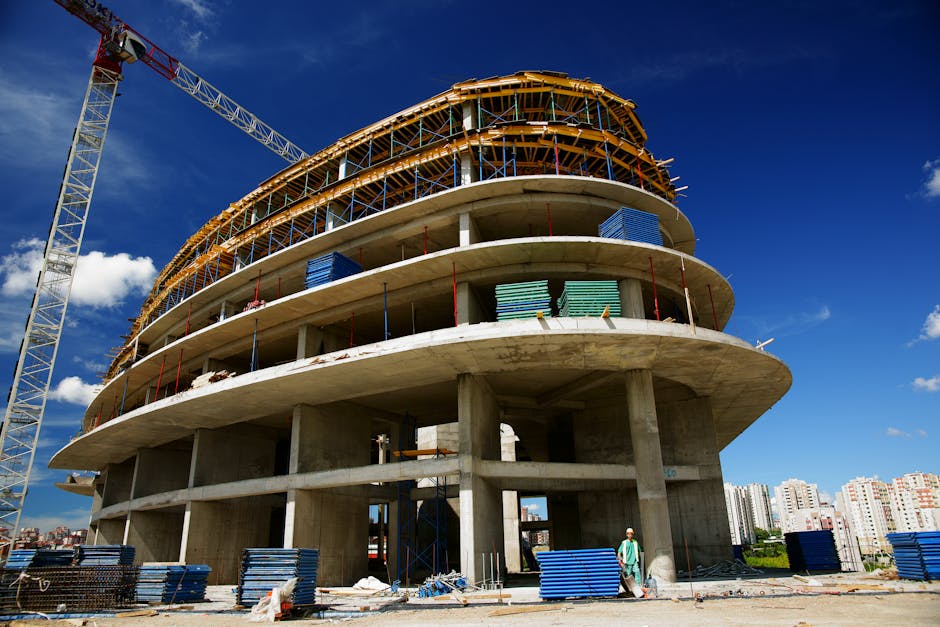Introduction to Lightweight Construction Materials
Lightweight construction materials are becoming increasingly popular in various projects due to their versatility and durability. These materials are designed to be strong yet lightweight, making them ideal for a wide range of applications. From aerospace to automotive industries, lightweight construction materials are revolutionizing the way we build things.
Benefits of Using Lightweight Construction Materials
Using lightweight construction materials can bring several advantages to a project. These materials are known for being easy to transport and handle, making the construction process more efficient. Additionally, they reduce the overall weight of the structure, which can lead to lower foundation costs. Lightweight materials are also environmentally friendly, as they often require less energy to produce compared to traditional construction materials. Moreover, they can contribute to improved energy efficiency in buildings, which can result in lower utility bills over time.
Project 1: Sustainable Housing
Sustainable housing is a project that focuses on using eco-friendly materials that have a lower impact on the environment. In this project, lightweight construction materials such as bamboo, recycled steel, and straw bales are commonly used. These materials help reduce energy consumption and promote sustainability.
Project 2: Green Roofs
Green roofs are becoming popular due to their environmental benefits. These roofs are covered with vegetation, helping to reduce energy costs, provide insulation, and improve air quality. In addition, they can minimize stormwater runoff and increase biodiversity in urban areas. By incorporating green roofs in construction projects, builders can contribute to sustainability and create more eco-friendly spaces.
Project 3: Lightweight Bridges
Lightweight bridges are being constructed using new materials that are stronger, but lighter than traditional materials. These bridges are designed to be durable and cost-effective, making them a sustainable solution for modern infrastructure needs. A key advantage of lightweight bridges is their ability to reduce construction time and costs while maintaining structural integrity.
Project 4: Eco-Friendly Vehicles
Project four highlights the development of eco-friendly vehicles, creating innovative transportation solutions with lightweight materials. These vehicles aim to reduce emissions and promote sustainability through technological advancements and environmentally conscious designs.
Project 5: Innovative Infrastructure Solutions
To create cutting-edge infrastructure projects, innovative solutions incorporating lightweight construction materials are being utilized. One such project focuses on developing sustainable structures that are both durable and environmentally friendly. These solutions aim to decrease construction costs, reduce carbon footprint, and enhance the overall efficiency of infrastructure development.
Advancements in Lightweight Construction Materials Technology
New lightweight construction materials are revolutionizing the way we build structures. These materials are not only strong but also much lighter than traditional options, making construction faster and more cost-effective. Innovations in lightweight construction materials technology include concrete mixed with glass or carbon fibers for increased durability, foam concrete for insulation, and composite materials for added strength. These advancements are changing the face of construction, offering sustainable and efficient solutions for modern building projects.
Challenges and Considerations in Implementing Lightweight Construction Projects
Lightweight construction projects face challenges like ensuring durability and meeting safety standards. Selecting the right materials is vital to balancing weight and strength. The project’s budget and timeline are crucial factors to consider. Collaboration between architects, engineers, and contractors is key for successful lightweight construction projects.
Conclusion: Impact and Future Prospects of Lightweight Construction Materials
Lightweight construction materials offer numerous benefits like improved fuel efficiency in vehicles, reduced costs in construction, and enhanced sustainability. Companies and researchers are continually exploring new ways to utilize these materials in various innovative projects. As the demand for eco-friendly and efficient solutions grows, the future of lightweight construction materials looks promising. The impact of these materials is evident in sectors like transportation, infrastructure, and manufacturing. Their versatility and durability make them a preferred choice for many applications. In the coming years, we can expect further advancements and widespread adoption of lightweight construction materials across different industries.


